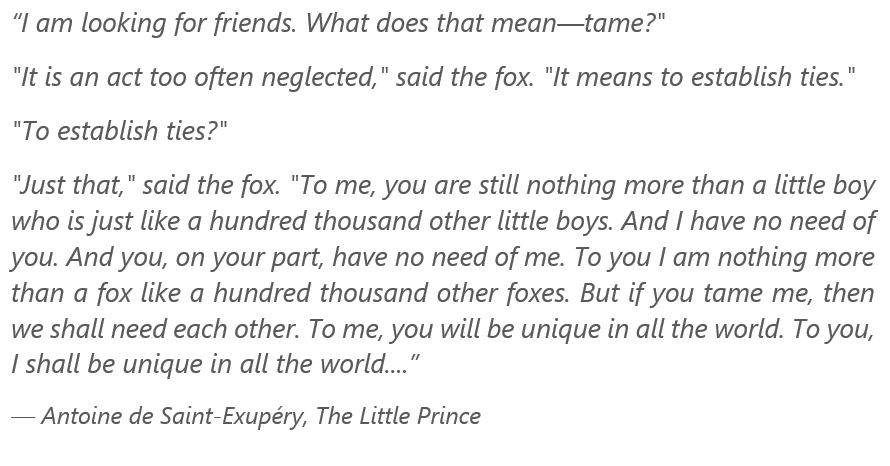Flexing Our Empathy Muscles
1/25/24 / Maria Cuevas

“The most beautiful things in the world cannot be seen or touched, they are felt with the heart.”
― Antoine de Saint-Exupéry, The Little Prince
While reading Rob Volpe’s book Tell Me More About That, our qualitative team got to thinking: how do we currently practice empathy in our work and how can we build more empathy into our work? Empathy is crucial not just to qualitative research, but also to all the other work we do, from survey design to interacting with clients. Here we explore that idea further by taking some of the teachings of The Little Prince and applying them to our research process.
When discussing the books that we would like to read during one of our team meetings, our colleague, Matt Bruce, suggested the classic book The Little Prince by Antoine de Saint-Exupery as an imaginative way to explain the importance of qualitative research. We learn from The Little Prince that curiosity and being open minded are highly valuable traits that many adults are lacking (at least, according to the Little Prince). These traits also help build another important skill: empathy.
Connecting through empathy
You might ask, what is empathy? We generally understand empathy as the ability to experience the feelings and thoughts of another. But going a step further, how does someone engage in the work of empathy? How do we do it? How can we really connect with others when their thoughts and feelings might be quite foreign to our own? Empathy is essential to building connections, so others feel understood beyond the listening our ears can do and the seeing our eyes perform. The fox in The Little Prince explains it best:

This quote explains what we already know: observation only takes us so far—to truly understand another person, we need to practice empathy. As researchers and consultants, we seek to understand both clients and participants. Oftentimes, we are the bridge-builders between our clients and the people participating in our research, we help our clients understand and, if relevant, provide recommendations based on our findings. Therefore, we put ourselves in both the client’s place and the participants’ place depending on the task at hand.
Taking Perspective
When interacting with clients, perspective-taking is important to understand the client who may come to us with varying levels of clarity on how they want to move forward and what information they need to do so. Our first job is to understand the client’s needs and context.
In The Little Prince, the fox explains the concept of establishing ties, building connections, and maintaining relationships using the concept of “taming.”

The fox’s explanation of taming refers to the give and take experienced in relationship building—we are no longer living independently and seeing things just from our own perspective. The terms establishing ties and taming also come to mean that you are grounded by the other person. Practicing empathy and perspective taking is essential to establishing ties not just with clients but also with participants. Rapport building with participants is crucial to conducting effective focus groups and in-depth interviews.
What is your favorite fiction story and how does that make you a better researcher? How does it help you exercise your empathy muscle?

